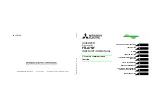
Drive Configuration
Initial Setup of the Register Tree
VelocityMaximum
: This parameter specifies the max allowed velocity. The following aspects need to
be considered to set this parameter:
design specifications e.g. max required processing speed
electrical and mechanical properties of the axis (see also equation above)
max allowed encoder speed (see encoder data sheet)
cut-off frequency of the encoder input (see drive hardware manual)
available DC bus voltage
AccelerationMaximum
,
DecelerationMaximum
: This parameters restrict the acceleration and decel-
eration during the move. In most cases the same values are used for both parameters. Acceleration
and deceleration are basically restricted by the max available current (see equation above). But also
the following factors need to be considered:
static load (e.g. vertical axis)
process forces and friction
force restrictions of mechanical elements like spindle drives.
DecelerationEmergency
: This parameter is relevant if an emergency stop is commanded. In normal
case the value is set to the same value as
DecelerationMaximum
.
JerkMaximum
: This parameter defines the maximum slope of the acceleration profile. The max pos-
sible jerk is basically restricted by the available voltage (see equations above). Furthermore the jerk
limit is also relevant regarding how much the mechanical system is excited. A smaller jerk reduces
the bandwidth of the excitement and will therefore also reduce the position error during the move.
Typically the vlalue of the jerk limit is set by factor 10 to 100 bigger than the acceleration maximum.
DynamicReductionFactor
: The dynamic reduction factor
f
drf
is a value in the range [0..1] and can be
use to reduce the path dynamics. The factor scales the limits accordingly the following rules:
v
red
=
v
max
f
drf
;
a
red
=
a
max
f
drf
2
;
r
red
=
r
max
f
drf
3
5.2.4 Axis[].Parameters.PositionController
The position controller node contains registers to configure the encoder, the position controller and the
feed forward. For a normal axis only
Encoder[0]
and
Controller[0]
need to be configured.
Encoder[1]
and
Controller[1]
are used if an axis provides a second encoder, e.g. for dual loop-control.
PositionUnit
: This parameter is used to define the unit of the positions and it ensures that position
units in
TAM System Explorer
are displayed correctly.
With
EtherCAT
this parameter is also used to set the scaling of the set-points received from the con-
trol system. See [2] for more information.
MasterPositionSource
: With this parameters the source for
Signal.PositionController.MasterPosition
can be defined.
The following parameters can be used to configure the feed forward. Figure 50 shows the diagram of
the feed forward block.
FeedForwardPosition
: This parameter compensates a force which is proportional to the position,
e.g. a spring. For an initial setup this parameter is set to zero in most cases.
FeedForwardVelocity
: This parameter compensates a viscous friction. As the viscous friction is not
known in advance, this parameter is set to zero for the initial setup.
FeedForwardAcceleration
: This parameter compensates the inertia of the axis. This is an important
parameter regarding the dynamic performance of the axis. Basically, if the inertia of the axis and the
ServoDrive-SetupGuide_EP018
2022-08-25
47
/
83
















































